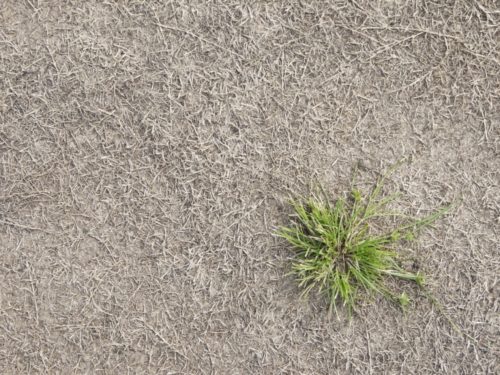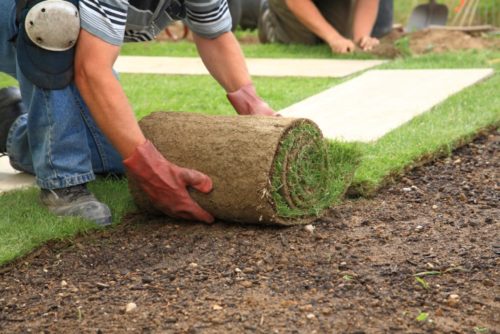A lush, green lawn is a beautiful thing. When the weather is nice, a green lawn is the perfect place for games, picnics, and long, peaceful naps. However, a lawn not properly maintained rarely looks so inviting and rich ― in fact, it might even be dead.
During the cold winter and hot summer months, grass tends to become dry and crunchy. Often, this is merely the lawn’s dormant state; it is protecting itself from the harsh temperatures and lack of moisture by retreating underground. In most cases, dormant lawns will revive in more temperate seasons, especially with some appropriate maintenance and TLC.
Even so, not all brown lawns can be saved. Here are some signs your lawn won’t come back ― no matter how much fertilizer you spread.
1. It Doesn’t Grow With Water
In comparison to some other landscaping plants, grass is relatively easy to grow. Essentially, all it needs is some sunshine and water. In fact, water is one of the best ways to check whether your lawn has gone dormant or whether it has died.
During the hot summer months (or cold winter months, if your lawn isn’t covered by snow) you can verify the state of your grass by giving it an extra helping of H20 for a few days. If you don’t see some active growth, then your grass is probably dead.

2. It Looks Pink, White, Black, or Red ― not Brown
Though it depends on your species of grass, most dormant grass is a recognizable shade of dark yellow or brown. If you look outside and notice patches of pale or rusty red, you should know your lawn is in serious trouble.
Different colors are usually the sign of lawn fungus, and unless you seek professional treatment straightaway, your grass will soon be dead, Jack.
3. It Feels Spongy, not Crunchy
Only the above-ground portion of your lawn should ever go into dormancy; even during the harshest weather, the root system below should be just fine. Thus, when you walk on your dormant lawn, you should feel the crunch of dried grass beneath your feet. If instead you sense a soft, spongy ground, your lawn is likely infested with a pest that has decimated the roots. If you catch the pest early, a professional can attempt to eradicate it before it does too much damage. Unfortunately, once you sense this sponginess across your yard, it’s too late: Your lawn is dead, Jack.
4. It Pulls Up Like Carpet
When you pull on your grass, all you should get is a fistful of fresh, green blades ― or, if your lawn is dormant, a handful of dry leaves. However, if a good tug causes an entire section of turf to lift from the ground, sign’s aren’t good for your lawn’s life.
This is another symptom that your lawn’s root system isn’t healthy, and because there is no way for you to regrow grass roots before the plant kicks it, you should be ready to mourn. Your lawn is dead, Jack.

5. It Wilts in the Sun
As mentioned before, grass isn’t too fussy as long as it has sufficient water and sunlight. For the most part, grass can withstand even the brightest of days, as long as temperatures don’t get too high. That means if you see any wilting, your lawn isn’t long for this world.
Certain bugs, primarily the chinch bug, kills grass fast, but the only symptom of an infestation is wilting. Left untreated, in a matter of days, your lawn could be dead, Jack.
What to Do About a Dead Lawn
If your grass is truly dead and gone, there isn’t much to do but rake up the old and lay down some new. Late summer and early fall are the best times to renew your lawn, even if you are only suffering from a few dead patches. The warm soil temperatures and mild sunlight are perfect conditions for growing seeds and roots.
You might experiment with a different variety of grass this time around; you might consult a lawn specialist to find a variety that suits your needs in regards to watering, fertilizing, mowing, and other essential lawn maintenance. Then, the chances of your grass dying next year will be lower, and you can finally enjoy the lush, green lawn you’ve always dreamed of.



Cool article, Thanks for these five signs of
lawn. Good job!